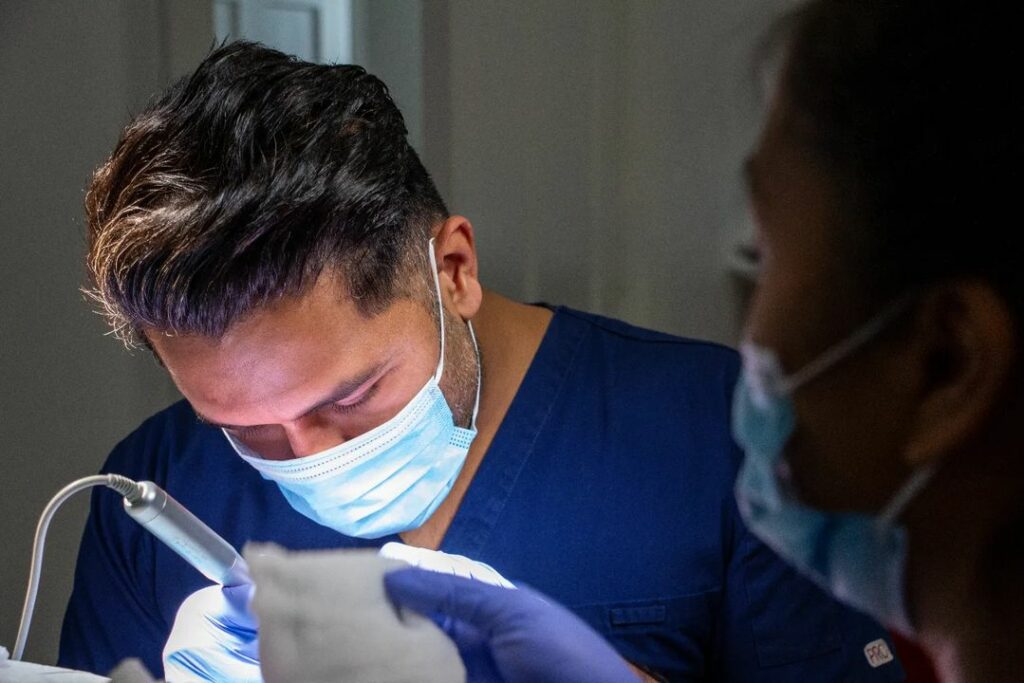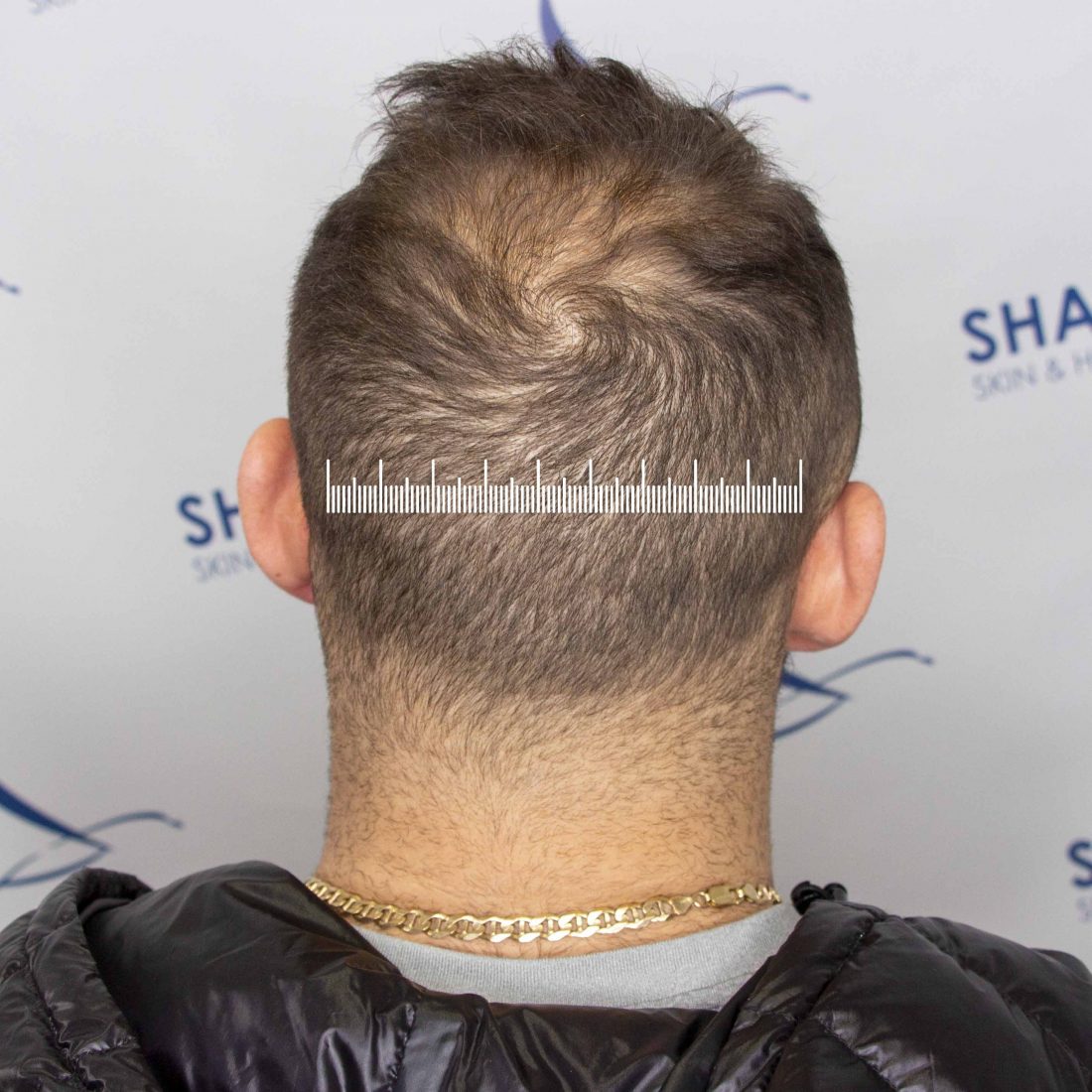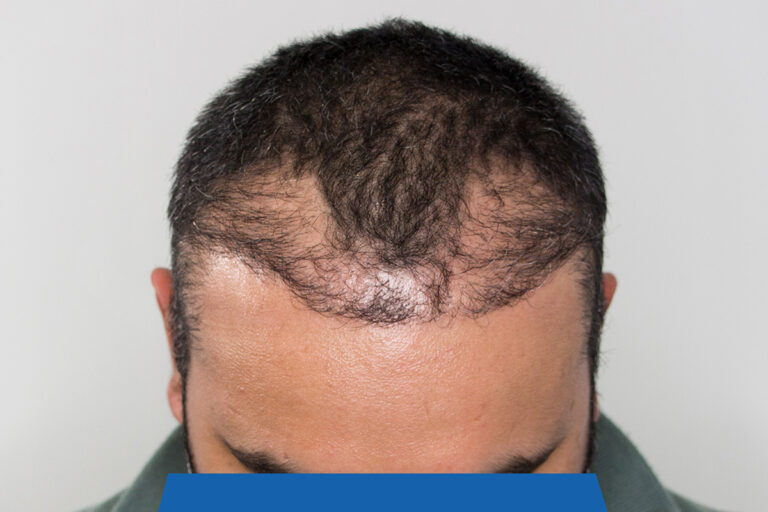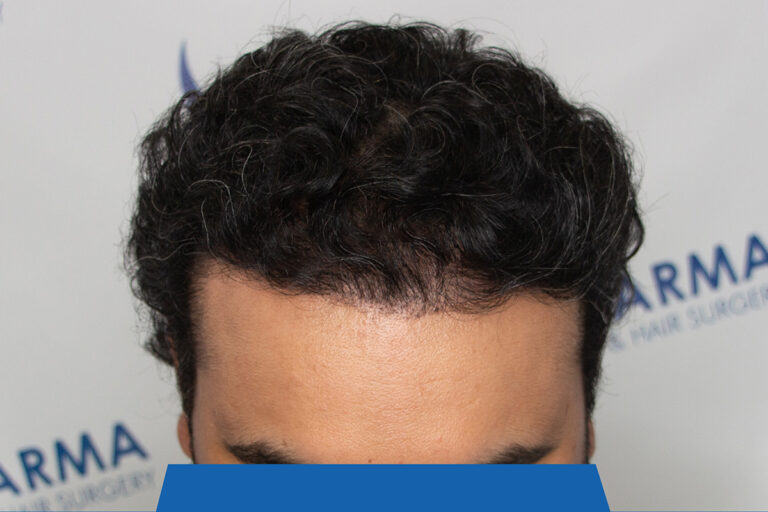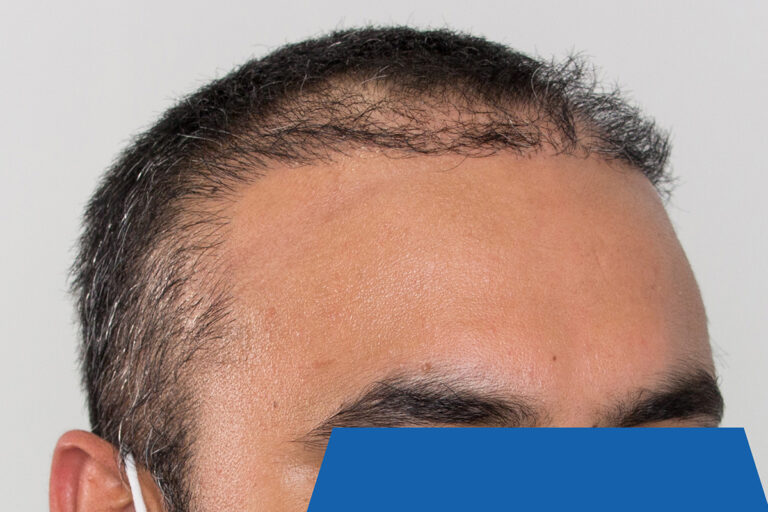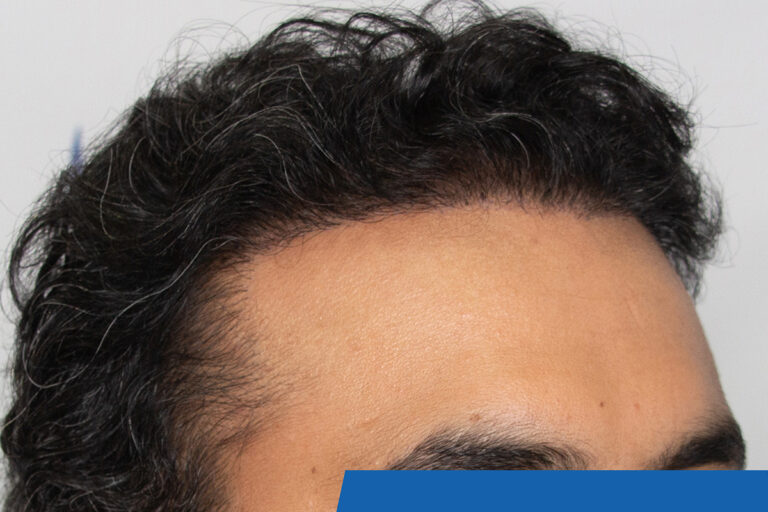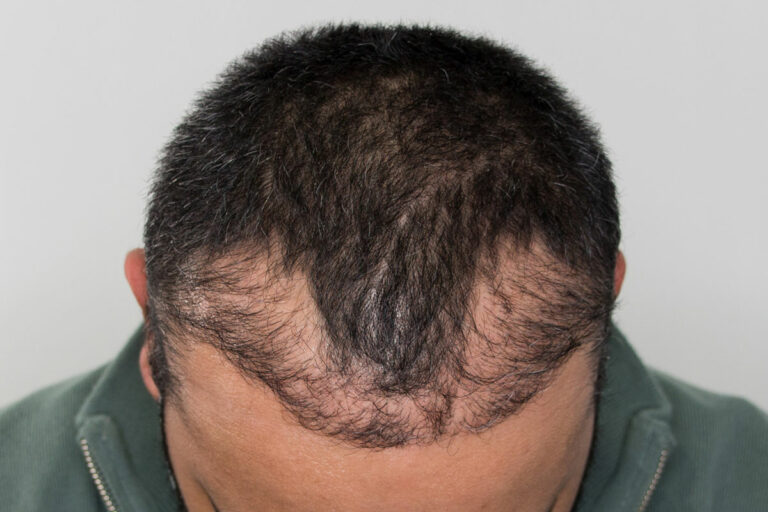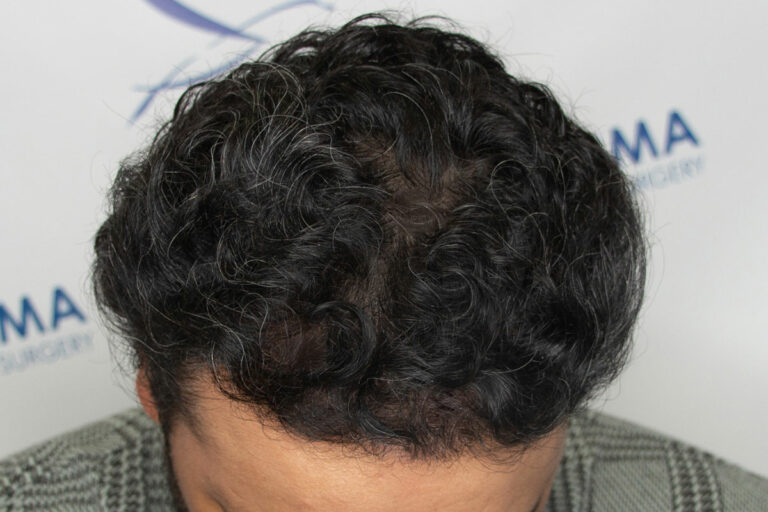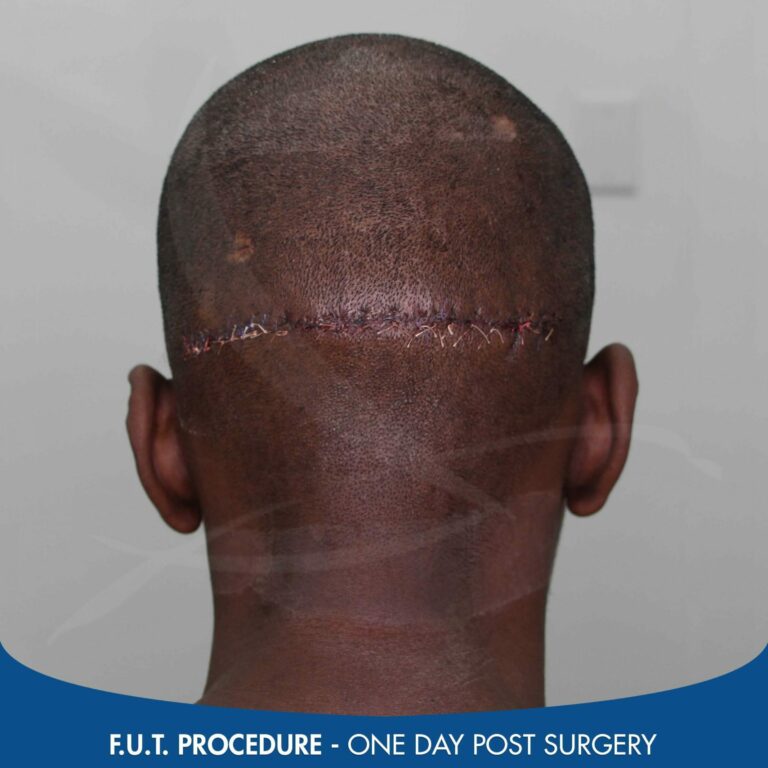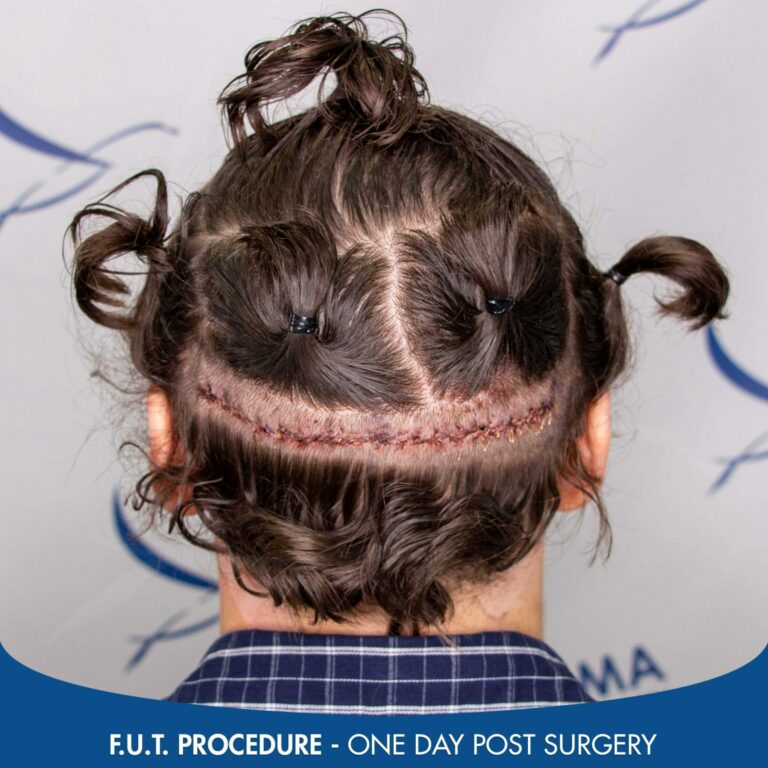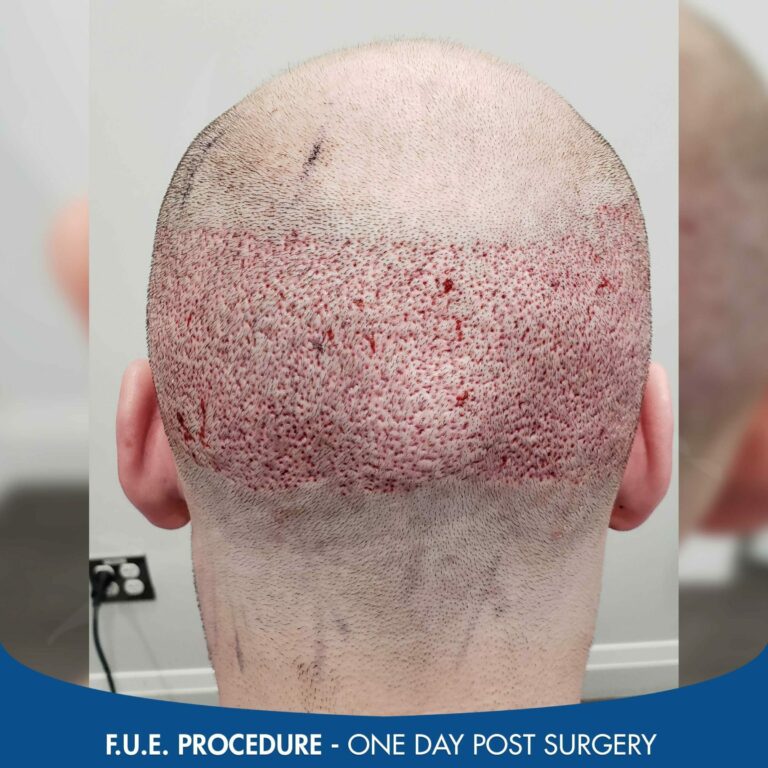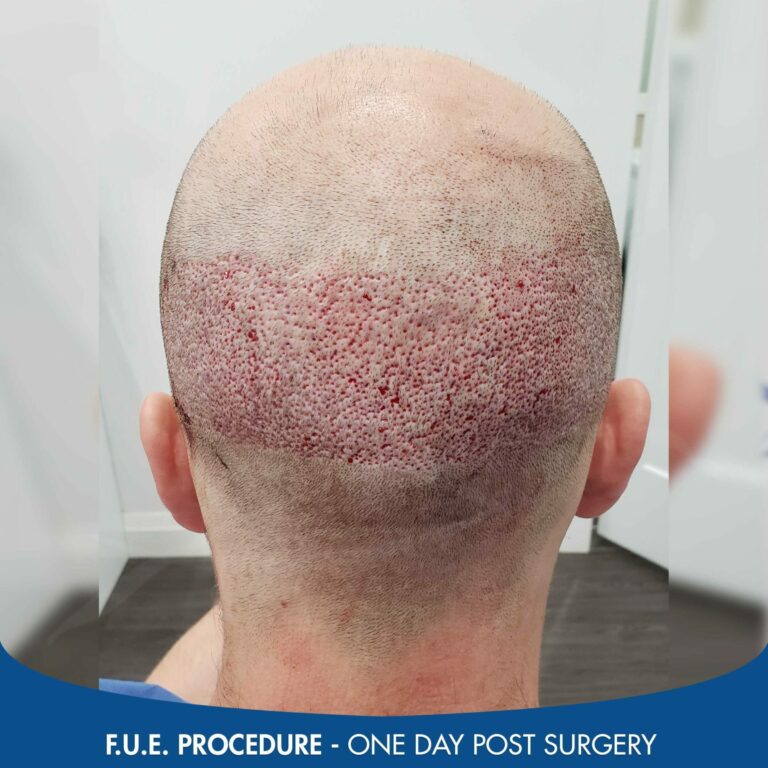Modern Technology has Transformed the Hair Transplant Space
The techniques used today are effective in minimizing hair transplant scars. With any surgery scarring is unavoidable, however the techniques used today are effective in limiting the depth and visibility of these areas. Choosing a skilled surgeon is essential if you want to minimize scarring. The appearance of the scars will vary depending on the type of surgical technique used for the treatment. The F.U.E. Method, also known as follicular transfer involves removing hair follicles, which contain the root from which hair will grow one at a time. This method which was once thought to be impractical has quickly become the golden standard for hair transplant surgery.
Hair Transplant Revisions
After an unsuccessful hair transplant in India, this man came to our clinic looking for help.
We see many cases like this. Certain clinics promise miracle hair transplant results at an unbelievably low price and this is what can happen. Whether it was poor technique, or improper graft harvesting the results after his initial transplant just didn’t take. The most tragic part is that the grafts taken for his first surgery will never grow back. We all have a finite amount of grafts located in the donor area which means you are limited on the number of transplants you may receive throughout your lifetime.
Luckily, this patient had enough viable grafts left in his donor area to perform a revision hair transplant. Using just under 2,000 grafts we were able to add density to the front, while also cleaning up his uneven hairline. Being only the 6-month mark, he still has a full year of growth ahead of him. We were truly honoured to have him trust our clinic after such a bad experience. I hope he can feel confident about his hair again and put this botched surgery behind him.
See more before & after photosHow to Disguise Your Hair Transplant
Female F.U.E. Concealment
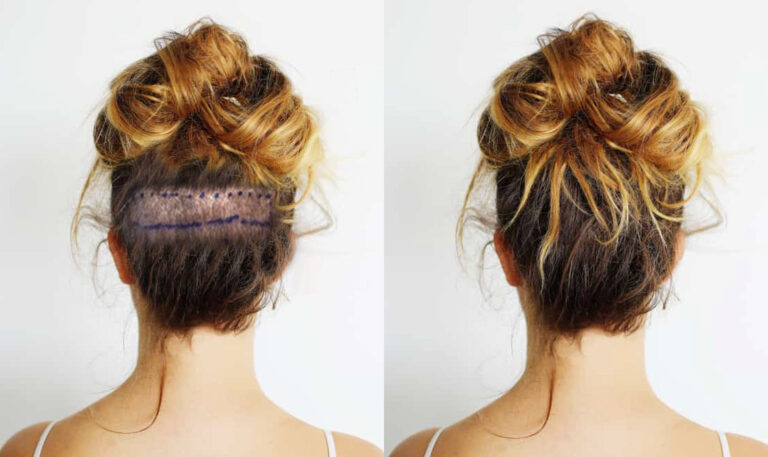
Long hair can assist to hide the donor site. Some women tie their hair into a bun to further conceal the area.
Male F.U.E. Concealment
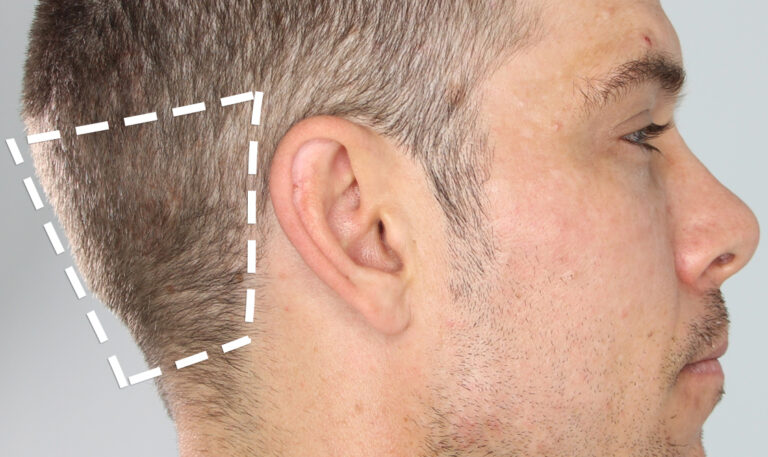
Even with short hair you can disguise the donor site. This patient is one-month post F.U.E. transplant of almost 2,000 grafts.
What to expect
Follicular Unit Transplant, commonly known as “strip” transplant surgery, is faster than F.U.E. and doesn’t require the head to be shaved, which allows you to keep the existing hair long if desired. A small scar is present after the treatment but is usually unnoticeable because it is hidden by only a small amount of hair growth.
Scarring from Follicular Unit Transplants (F.U.T.)
Scarring is most noticeable with F.U.T. hair transplants since a strip of scalp is removed from the donor area in the back of the scalp. The surgeon uses a scalpel to remove the strip, then sutures are used to facilitate healing. The scar line varies in length and width depending on the strip size that needed to be harvested.
Scarring from Follicular Unit Excisions (F.U.E.)
With the F.U.E. hair transplants, the hair follicles are harvested individually from the sides and back of the scalp. A micro-punch tool is used for this method, which can leave a round, tiny scar with a diameter of up to 1 millimeter. Hundreds or thousands of hair follicles are transplanted, which means the same number of scars will be left in the donor area. These scars look like small, white dots when they are healed. No stitches are required for this treatment.
Case studies
Here are some in-depth stories about some of our successful transplants. Hear from the individuals who are now enjoying new, thick, and dense hair.
Micheal’s Past Hair Transplant Scar Revision
Micheal travelled to Edmonton, Alberta seeking the expertise of Doctor Sharma. He had an F.U.T. procedure from another clinic about 4 years ago and suffered a large scar from the procedure. Dr. Sharma was able to revise the scar by removing the scar tissue and delicately stitching the skin back together.
For his second surgery Dr. Sharma used the F.U.E. (Follicular Unit Extraction) method to enhance his hairline without any noticeable scarring at all.
Hair Transplant Scars FAQ
Dr. Sharma is an Expert at Minimizing Scarring
With F.U.T. hair transplant services, he takes his time and ensures the stitches aren’t too tight, which allows the tissue to heal naturally.
When the donor area has healed, F.U.T. transplant scars won’t be noticeable if you choose a haircut with a length that is long enough to cover the donor area (clipper length of 4+).
The F.U.E. transplant procedure requires pulling individual hair follicles that won’t grow back. The micro-incisions are so small that they are difficult to see with the naked eye. Patients who choose F.U.E. transplants can wear their hair short –a clipper length at a 1 or a 2 is sufficient to cover up any visible scars. If you prefer to wear your hair short, then F.U.E. might be the right treatment.
If you’ve had F.U.T. hair transplants in the past from a different surgeon, you might feel self-conscious about the appearance of the scar. Certain treatments can be used to reduce the appearance and size of the scar. One possible scar treatment is an F.U.E. hair transplant to graft hair follicles onto the scar. The effectiveness of this treatment depends on the thickness of the scar because scarred skin doesn’t hold the grafts as well as healthy skin. Alternatively, there are medications that can occasionally be used to thin the scar tissue.
For more information about scar revision treatments, schedule a consultation for personal recommendations from Dr. Sharma.
The healing time after a transplant varies depending on the type of treatment used. For example, the stitches in the donor area of an F.U.T. transplant can usually be removed in 10 – 14 days. The progress of the scar improves with time, and overall healing time varies from one patient to the next.
After hair transplant surgery is complete, the recipient area and the donor area will need time to heal. You will notice redness and scabbing in the recipient area. It is important that you do not touch the grafts for at least six days. The scabs are usually gone within 10 days.
The hair transplant scars will be red in the beginning and will continue to turn white and fade away. Since every person has unique skin tones and healing responses, this time frame varies for each patient. As a general rule of thumb, the redness takes longer to fade for patients with pale-coloured skin.
Book now
Talk to a Hair Transplant Expert in Edmonton, Alberta
Contact us for a free virtual hair loss consultation and get started on your transformation today.
